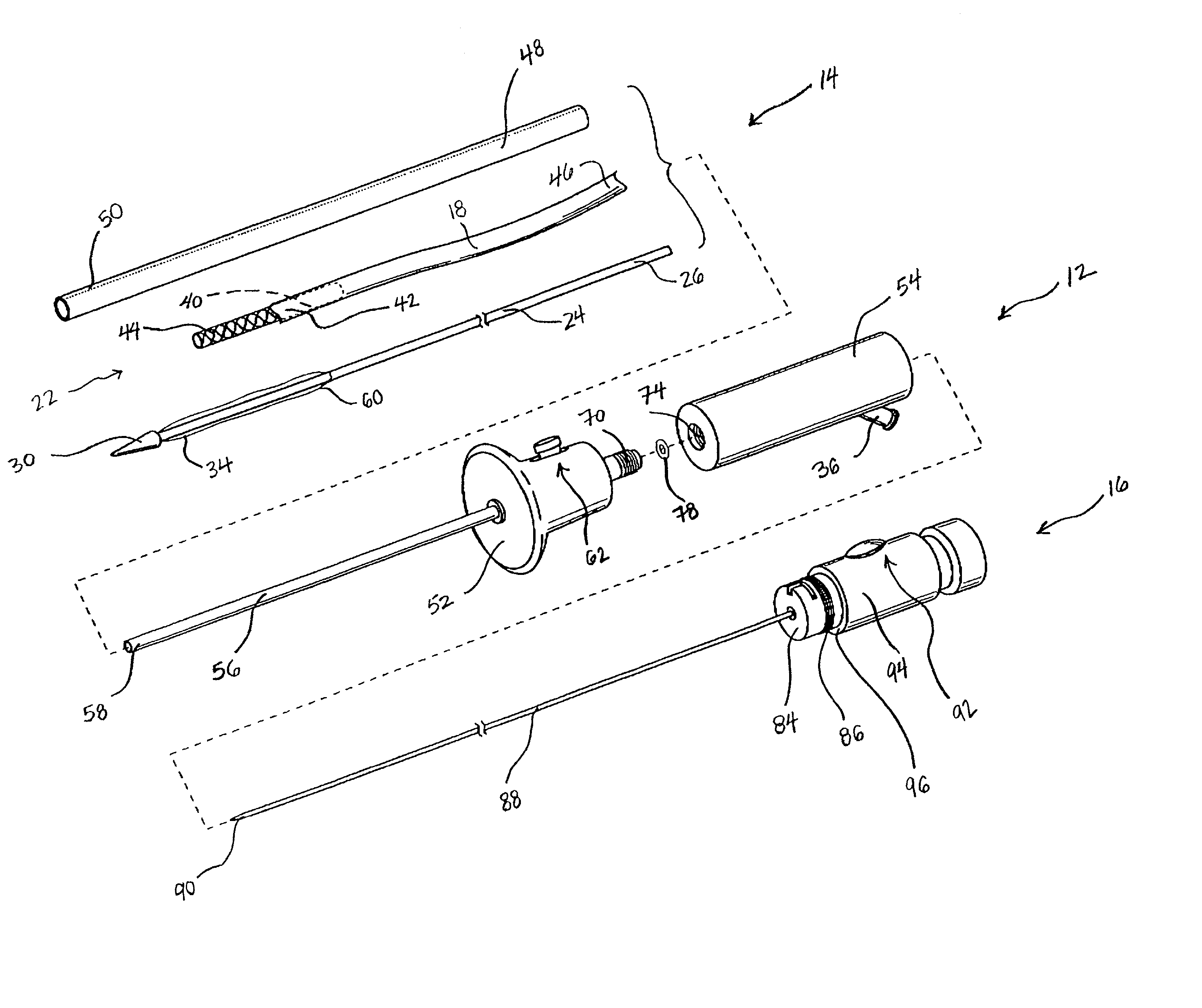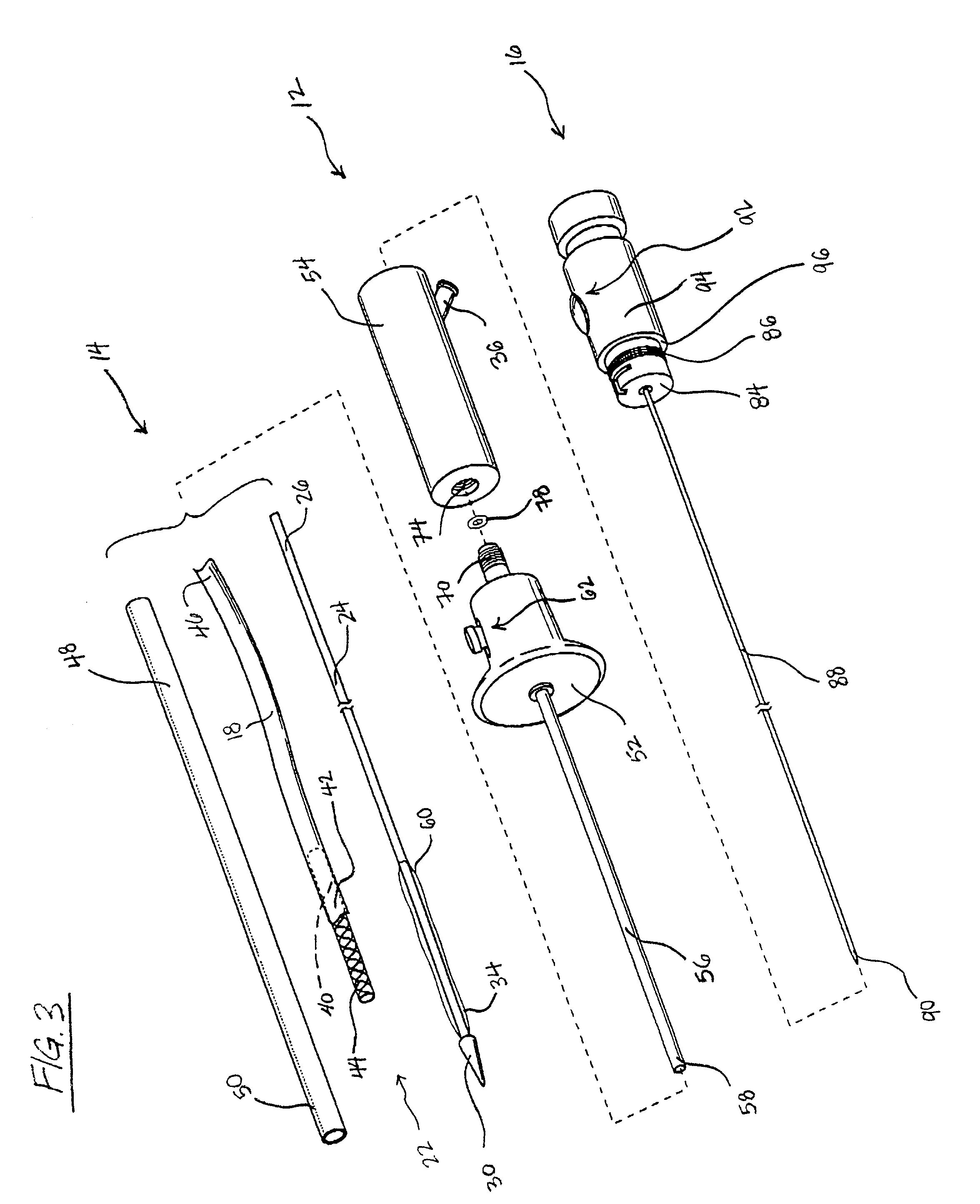Methods and devices for bypassing an obstructed target vessel by placing the vessel in communication with a heart chamber containing blood
a technology of target vessel and heart chamber, which is applied in the field of bypassing an obstructed target vessel by placing the vessel in communication with a heart chamber containing blood, can solve the problems of increasing the difficulty and time associated with carrying out the bypass procedure, affecting the efficiency of the operation, and a large majority of surgeons' difficulty in creating an anastomosis during the beating heart procedur
- Summary
- Abstract
- Description
- Claims
- Application Information
AI Technical Summary
Problems solved by technology
Method used
Image
Examples
first embodiment
[0064] According to the invention, a substantially suture-free anastomosis is formed between the graft vessel and the target vessel in order to carry out the bypass procedure. The term "substantially suture-free" means that the anastomosis is not a conventional hand-sewn anastomosis created by suturing the vessels together. As such, some suture may be used to facilitate the bypass, but the attachment of the graft and target vessels is not done in typical hand-sewn fashion.
[0065] The vessel coupling utilized to form the anastomosis between the graft and target vessels is preferably a conduit, and more preferably an expandable conduit, that facilitates joining the vessels to place their lumens in fluid communication with each other. The preferred and illustrated embodiments utilize a vessel coupling in the form of an expandable conduit, which allows the coupling to be collapsed for introduction into the target vessel and then expanded into contact with the vessel wall. Nonetheless, th...
second embodiment
[0107] According to the invention, devices and methods are provided for forming an anastomosis between a graft vessel and a target vessel while preserving native blood flow through the target vessel. The anastomosis may be created using a vessel coupling including a first portion secured to the graft vessel and a second portion secured to the target vessel without blocking blood flow through the target vessel. The anastomosis formed according to this embodiment is preferably, but not necessarily, a substantially suture-free attachment between the vessels.
[0108] One preferred device constructed according to the second embodiment of a vessel coupling is indicated by reference numeral 130 in FIGS. 13-18. The vessel coupling 130 is in the form of a stent 132 that is secured to a graft vessel 134 to form a stent-graft assembly 136. The stent-graft assembly 136 is adapted to be secured to a target vessel so as to place the lumens of the graft and target vessels in fluid communication. FIG...
PUM
 Login to View More
Login to View More Abstract
Description
Claims
Application Information
 Login to View More
Login to View More - R&D
- Intellectual Property
- Life Sciences
- Materials
- Tech Scout
- Unparalleled Data Quality
- Higher Quality Content
- 60% Fewer Hallucinations
Browse by: Latest US Patents, China's latest patents, Technical Efficacy Thesaurus, Application Domain, Technology Topic, Popular Technical Reports.
© 2025 PatSnap. All rights reserved.Legal|Privacy policy|Modern Slavery Act Transparency Statement|Sitemap|About US| Contact US: help@patsnap.com



